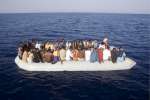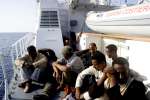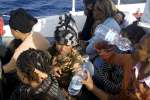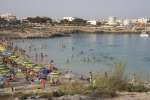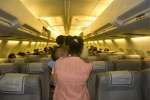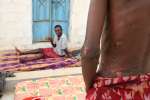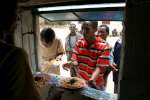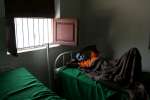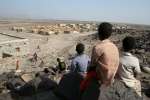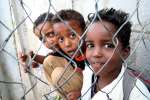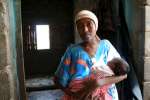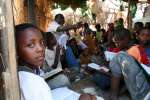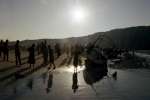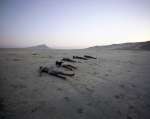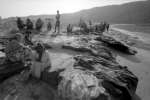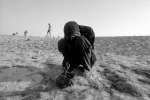Irregular Migration by Sea: Frequently Asked Questions
Asylum in the EU, 28 May 2009
How many of the people trying to come to Europe in small boats are refugees fleeing persecution, conflict or indiscriminate violence?
It is very difficult to know the exact percentage of those in need of international protection. Official statistics in most countries, for example, do not include information on how an asylum applicant arrived – whether by sea, land or air.
The number of boat people in need of international protection varies widely from country to country (and even within the same country) and at different times of the year. In Malta, roughly 70 percent of those arriving by sea apply for asylum and just under half of them, on average, are recognized to be in need of international protection. They receive either refugee status or another form of protection.
In the case of Italy, one third of those arriving on Lampedusa Island last year applied for asylum (some 6,000 people). This amounted to roughly 60 percent of all asylum applications in Italy. On average, almost half of all asylum applicants in Italy are recognized as refugees or granted protection status.
Although only a small proportion of the almost 32,000 people who arrived in the Spanish Canary Islands in 2006 applied for asylum, the number of asylum applications in 2007 went up. As of September 2007, there had been some 500 asylum applications in the Canaries, compared to 359 for the whole of 2006. This is particularly significant, given the fact that the overall number of arrivals by sea in 2007 went down.
Asylum seekers in Greece include an increasing number of Iraqis, as well as people from other countries in the Middle East, the Horn of Africa and south Asia. In the first six months of 2007, some 3,500 Iraqis applied for asylum in Greece – the second highest number for an industrialized country after Sweden. The figure, however, includes Iraqis arriving by land and air as well as by sea.
How many people die trying to cross the Mediterranean Sea?
The exact death toll will probably never be known as some of the flimsy vessels used by boat people just disappear without trace. Based on media and police reports, UNHCR estimates that over 500 people have died in the Mediterranean in 2007, while the Spanish authorities estimate that up to 1,000 died trying to reach the Canary Islands from Africa. Michael Pugh, an academic specializing on irregular migration by sea, carried out a rigorous study in 2004 which concluded that up to 2,000 people were dying each year trying to reach Europe by sea.
Are there any other regions in the world where this phenomenon takes place?
Tens of thousands of people, mostly Somalis and Ethiopians, risk their lives every year crossing the Gulf of Aden to seek safety or a better life. Yemen has for years accepted Somalis as refugees on a prima facie basis, while access for Ethiopians has been much more difficult. Many boat people die trying to cross the Gulf of Aden. In 2007, more 27,000 were reported arriving on the coast of Yemen while more than 1,200 were reported as dead or missing. Similar tragedies occur regularly in the Caribbean Sea and the Pacific Ocean.
What can be done to help these people?
UNHCR has developed a 10-point Plan of Action on Refugee Protection and Mixed Migration that sets out a number of areas where it believes initiatives are called for and where the agency can contribute some expertise.
In the case of Yemen, UNHCR provides basic care and assistance to new arrivals in its reception centres close to the shore. It has a refugee camp in Kharaz, close to Aden, where Somali asylum seekers and refugees can go if they wish. Many, however, decide to live in urban areas. UNHCR is stepping up its training on refugee law, international maritime law (particularly rescue at sea) and human rights to police, border authorities and coast guards.
International agencies working in Somalia have joined forces and set up a task force to better address the problem. UNHCR has scaled up its presence to some 25 staff in Somalia's Puntland and is preparing, as a first step, an information campaign aimed at warning people of the risks they face in using smugglers. Leaflets are being prepared for dissemination by outreach teams all over Puntland and Somaliland. Radio spots are developed as well. At the same time, UNHCR is working on improving access to protection and basic services inside Somalia for those in need of international protection. This could offer a safer alternative for refugees and internally displaced people.
While UNHCR hopes that such measures will bring down the number of departures, they will be far from sufficient to bring the movement to a halt. Root causes like war, human rights violations, persecution and poverty force people to leave their homes and, unless these issues are properly addressed, the tragedy will continue.
What is UNHCR's stance on interception by Frontex or European Union (EU) member state patrols?
Practice differs depending on the member states involved but, in any case, UNHCR expects operations by Frontex – the external border security agency of the EU – to be in line with international and EU standards. In practice, interception by either Frontex or by EU member states does not always take into account the different reasons why people cross the Mediterranean by boat. UNHCR's main concern is that there are no adequate mechanisms in place to ensure that asylum seekers are not pushed back to the territories of third countries without the possibility of their protection needs being properly examined and regardless of whether the responsibility for providing protection to the refugees among them lies more appropriately with an EU member state.
Is it fair that small countries such as Malta have to cope with so many arrivals?
UNHCR is aware of Malta's limited capacity to receive and host large numbers of migrants and refugees. Irregular migration is a global phenomenon affecting many countries around the world. The UN refugee agency has advocated for countries like Malta to be helped in dealing with this phenomenon within a spirit of solidarity and responsibility-sharing among EU countries.
Does UNHCR favour an EU-wide solution to the problem of irregular migration?
UNHCR has repeatedly called upon the EU and EU member states to improve responsibility-sharing among EU member states. This could help countries like Malta deal appropriately with irregular arrivals of migrants and refugees. UNHCR welcomes initiatives to date from some EU member states to help Malta through relocation or resettlement of refugees.
What arrangements does UNHCR favour for rescue at sea and disembarkation? What does international law say on this subject?
Anyone in danger or distress at sea should be rescued and allowed to disembark at a place of safety. This will usually be the closest safe port. The disembarkation of asylum seekers and refugees in territories where their lives and freedom may be threatened is precluded. The 1974 International Convention for the Safety of Life at Sea (the SOLAS Convention) and the 1979 International Convention on Maritime Search and Rescue (the SAR Convention) explain the different obligations of states and individuals regarding rescue at sea. These are complemented by the International Maritime Organization's Guidelines on the Treatment of Persons Rescued at Sea. The 1951 Refugee Convention also applies to refugees who have been rescued at sea.
Shipmasters and captains often face difficulties when trying to disembark people at the nearest safe port. UNHCR appeals to governments to strengthen coordination and cooperation in rescue operations to ensure that such difficulties are overcome.
UNHCR hopes that all countries will accept amendments to the SAR and SOLAS conventions, which aim to ensure that the obligation of the shipmaster to give assistance is complemented by a corresponding obligation of states to cooperate in rescue situations.
Once survivors have been disembarked, proper profiling and referral procedures should be in place to identify the differing needs of people upon arrival. People who express a need for international protection should have access to asylum procedures to have their claims properly examined.






